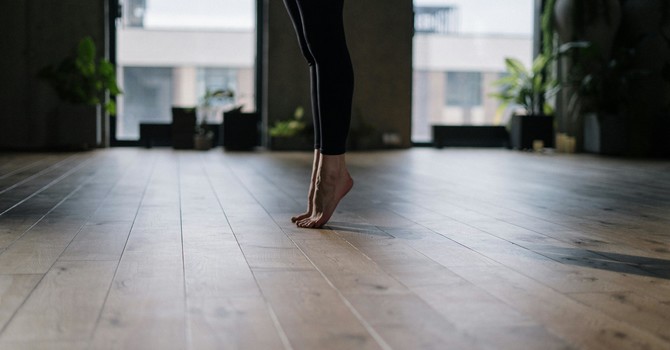
The lymphatic system plays a crucial role in maintaining our body's immune defense by removing toxins, waste, and other unwanted materials. Unlike the circulatory system, the lymphatic system doesn't have a central pump like the heart. Instead, it relies on muscle movements, gravitational forces, and breathing to facilitate lymph flow. Engaging in specific exercises can significantly enhance lymphatic drainage, promoting overall health and well-being.
Top 3 Exercises for Lymphatic Drainage
-
Rebounding
Rebounding involves performing exercises on a mini-trampoline, also known as a rebounder. This activity is particularly effective for stimulating the lymphatic system due to the vertical movements that encourage lymph flow. The gentle bouncing motion creates a pumping effect, aiding in the removal of toxins and waste from the body. Rebounding is also low-impact, making it gentle on the joints while providing cardiovascular benefits.
How to start: Stand on a mini-trampoline. If you are a beginner on the rebounder, begin by purchasing one that has upper extremity support (a half circle bar to hold grab if needed for balance). Start by performing a 'health bounce'. A health bounce is lifting one heel slightly and then lift the opposite heel. You don't have to jump on a rebounder to receive lymphatic benefits, bouncing is an excellent start. Begin by doing this 1-2 minutes in the morning and again in the evening. Remember, the lymphatic system is part of your immune system. Take it slow and easy when beginning on the rebounder. You can also do this when you don't have a rebounder. Simply stand in a doorway or hold onto the back of a chair and begin by lifting up and down on your toes in a bounce-like movement or alternate by lifing one heel and then the other.
2. Aquatic Exercises
Exercising in water offers unique benefits for lymphatic drainage. The natural resistance of water enhances muscle contractions, which in turn stimulates lymph movement. Additionally, the hydrostatic pressure exerted by water can assist in reducing swelling and promoting fluid movement in tissues. Activities such as water aerobics, swimming, or simply walking in a pool can be beneficial. The buoyancy provided by water also reduces the strain on joints, making aquatic exercises suitable for individuals with varying fitness levels or those recovering from injuries. Just being in the water is like wearing a full body compression garment. The resistance of the water gets the lymphatic fluid moving. So therapeutic and beneficial for your lymphatic system.
How to start: Again, remember to take it easy when beginning any new exercises. Begin with 15 minutes in the water and then get out. See how you feel. You may feel the need to pee upon exciting the water as the resistance of the water activates the movement of lymphatic fluid in your body. Doing standing or sitting exercises in the water 2-3 days per week is very beneficial for the lymphatic system.
3. Diaphragmatic Breathing
-
Also known as deep belly breathing, diaphragmatic breathing is vital for assisting the movement of lymphatic fluid. This breathing technique involves inhaling deeply through the nose, allowing the diaphragm to contract and the abdomen to expand, followed by exhaling slowly. The diaphragm's movement acts as a pump, facilitating lymph flow, especially in the abdominal region. Regular practice of diaphragmatic breathing can enhance relaxation, reduce stress, and support the lymphatic system's function.
-
The diaphragm is a large dome shaped muscle located near your lower ribs. When you inhale air into your lungs, the dome-saped muscle moves downward flattening out. When you exhale, the diaphragm muscle returns to its dome, curved shape. The movement of the muscle with each breath in and out act to massage the many lymph nodes and lymph vessels in your abdomen. This improves movement of the lymphatic fluid throughout your body. You either pee this lymphatic fluid out of your body or sweat it out.
- How to start: Either lying down with your knees bent, feet flat on surface or seated in a chair place your hands on your waist. Try to expand your ribs outward as you breath in. Inhale and focus on expanding your rib muscles instead of breathing only into your upper chest area. Practice for 6-10 breaths.
Incorporating These Practices into Your Routine
To support your lymphatic system:
-
Engage in Rebounding: Start with 1-2 minutes 2x/day to start. Then aim for sessions of 10-15 minutes, 3-5 times per week. Start with gentle bounces and gradually increase intensity as your fitness improves.
-
Participate in Aquatic Exercises: Include water-based activities like swimming or water aerobics in your weekly exercise regimen. You can also perform gentle exercises standing at the side of the pool such as leg lifts to the side, knee lifts toward the chest or heel raises. Also, seated exercises on the steps of the pool, you can do exercises like leg kick-outs (straighten your leg out from a bent position, seated marching (opposite knee lifts) or heel raises (up and down onto your tip-toes). When starting out with new aquatic exercises, begin with 15 minutes only. Gradually increase to 30-45 minutes, 2-3 x/week as able.
-
Practice Diaphragmatic Breathing: Incorporate deep breathing exercises into your daily routine, dedicating a few minutes each day to this practice.
Before starting any new exercise program, especially if you have existing health conditions, consult with a healthcare professional to ensure the activities are appropriate for your individual circumstances.
By integrating these exercises and breathing techniques into your lifestyle, you can effectively promote lymphatic drainage, supporting your immune system and enhancing overall health.
If you found this blog information helpful, wherever you are in the world, please send Dr. Elizabeth a direct message with feedback, blog articles suggestions or simply to say Hello and give a donation. Thank you so much in advance for your support! :)
*Schedule a PT Evaluation and Treatment on the Westside of Los Angeles, CA or if you're a California resident, you can book an Online Telehealth Physical Therapy visit.
Or Book a FREE Discovery Call with Dr. Elizabeth Baillie PT, DPT, CLT directly on the Mobile Physical Therapy and Wellness booking page below
CLICK HERE to see if an In-Person or Telehealth Online Visit is right for you!
MobilePTW.com
Serving Santa Monica, Westwood, Brentwood, Culver City, West Los Angeles, Culver City, Playa Vista, CA and more!
Dr. Elizabeth Baillie
Contact Me



